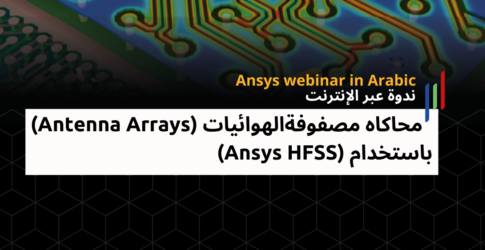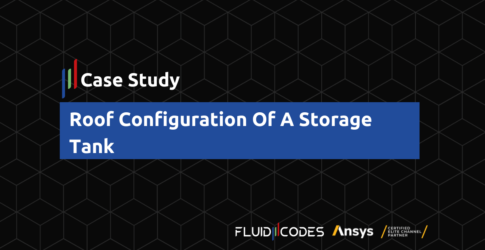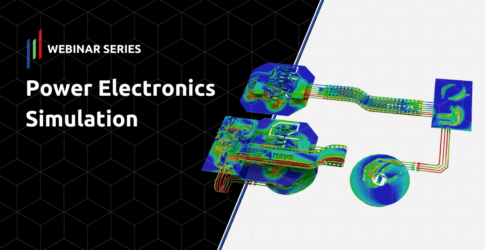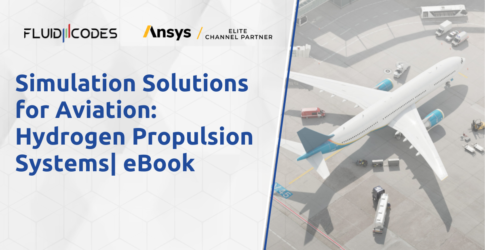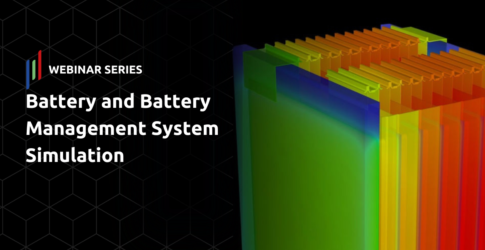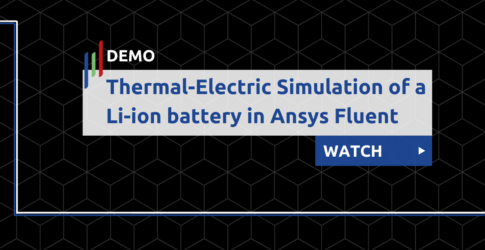Vehicle Engineering Solutions
Automotive Simulation is more important than ever in vehicle engineering with the innovation surge currently happening in the industry.
Smart electronics, infotainment, telecommunications, advanced software – vehicle makers are delivering innovative, groundbreaking technologies to today’s consumers. They are also quickly making self-driving vehicles a reality with the introduction of advanced driver assistance systems and autonomous features.
Simultaneously, they are addressing growing fuel costs and environmental concerns by re-engineering all aspects of vehicle engineering — from aerodynamics, engine and transmission to vehicle body, passenger comfort and electrical and electronic systems.
- Thermal and Structurally Robust Electronics Design
- Fuel Efficiency & Emissions
- H/EVS
- Electronics & Embedded Systems
- Quality & Reliability
- High Fidelity Antenna Design
- High-performance fuel cell development
- Efficient, durable engine cooling design
- High-pressure fuel injector development
- Low NVH, Durable brake design
- Comprehensive underhood thermal management
- Efficient high-performance turbocharger development
Thermal and Structurally Robust Electronics Design
Wireless communication systems are powering the smart products revolution.
With unparalleled breadth and depth in multiphysics simulation, Ansys offers a comprehensive solution for ensuring the thermal and structural robustness of automotive electronics.
- Thermal management, based on the world-leading Ansys Fluent CFD solver, the fastest and most-validated solution on the market, gives you:
- The ability to capture all complex geometries
- The ability to import ECAD geometries
- The ability to couple with electronic and structural (FEA) analysis tools
- Electro-thermal-structural multiphysics features include:
- Drag-and-drop multiphysics couplings
- Flexible coupling methods
- Fast, accurate data mapping
- Automated solver coordination
- Deep electromagnetics, fluid, and structural solver technology and capabilities
Fuel Efficiency & Emissions
Ambitious government regulations and strong customer demand for green vehicle technology such as higher-mileage vehicles, push car and truck makers to find and exploit every opportunity to make designs fuel-efficient. All systems are on the table for re-engineering — body, interior, chassis, electrical, and electronics and powertrain.
To succeed, automakers must reduce aerodynamic drag without sacrificing cooling and cabin quietness, reduce vehicle weight while still meeting strength and durability needs, reduce rolling resistance in innovative ways, improve the combustion efficiency of engines, and deploy effective exhaust after-treatment devices.
ANSYS comprehensive emissions modeling and simulation tools and best practices improve fuel efficiency via all these means, optimizing vehicle weight with strong and durable composites design, optimizing aerodynamic drag up-front, and downsizing and optimizing engines and powertrain subsystems.
H/EVS
Strong customer demand and governmental push for higher mileage, greener vehicles means that car and truck makers have to develop and deploy electric vehicle and hybrid technology. Companies that bring more fuel-efficient, less expensive hybrid and electric vehicles to market faster will dominate the future automotive business.
Vehicle manufacturers are making rapid advances in hybrid technology by reducing battery cost and increasing life, eliminating battery catastrophic failure modes, making the traction motor highly efficient, minimizing reliance on rare earth elements, meeting EMI–EMC regulations, and developing fuel cells.
Ansys automotive simulation tools and best practices of integrated multiphysics, multi-scale platform model hybrid technology aspects such as batteries, fuel cells, motors, power electronics, and controllers, from end-to-end, using in-depth models/sub-models, with precision and accuracy. The solution includes reduced-order methods (ROMs) that enable effects of a subcomponent to be represented within an assembly without loss of accuracy.
Electronics & Embedded Systems
Automotive embedded systems and electronics make today’s vehicles more efficient, safe, comfortable and fun. Paradigm changing innovations such as advanced driver assistance systems (ADAS) and autonomous vehicles are just a few years from production. Vehicles will soon be more electronic machines than mechanical ones. However, automotive electronics and automotive embedded systems drastically increase the complexity of a vehicle, and vehicle makers struggle to manage the resulting safety and reliability issues.
Vehicle makers and suppliers must adopt standards such as ISO26262 and AUTOSAR that reduce complexity and enhance safety. However, this must be accomplished while drastically reducing the time to market.
ANSYS simulation software enables faster, more robust engineering of antenna and radar development, EMI–EMC, signal integrity, chip–package systems, infotainment, human-machine interfaces, telecommunications and electronics cooling. ANSYS tools are revolutionizing development of controller software via high-fidelity, fast-running, model-based systems engineering solutions to create models for controller software verification. Certified automatic embedded code generation tools eliminate the need for controller software validation.
Quality & Reliability
Vehicle companies are constantly wary about major quality assurance and vehicle safety issues identified late in the development cycle or, even worse, after the vehicles have been manufactured and sold. These situations require either last-minute costly fixes or expensive warranty recalls.
Getting product design right upfront calls for virtual exploration of design alternatives from many different angles, involving variations in manufacturing and operating conditions.
Ansys simulation software enables vehicle engineers to achieve quality assurance and vehicle safety by exploring these variations with speed and confidence. With ANSYS’ Multiphysics solutions, products can be virtually tested under real-world operating conditions that typically involve simultaneous, multiple physical loads.
Persistent parameterized simulation workflow and design exploration tools from ANSYS enable fast study of a wide design space to uncover potential failure modes and quality issues.
Ansys’ high-performance computing tools allow large design exploration studies in short time frames, while adjoint solvers and topology optimization tools enable engineers to make designs robust from the start.
High Fidelity Antenna Design
Miniaturization of antennas, limited channel bandwidth, reduced design time, and antenna interaction with other components present stiff challenges to the design engineer. Our comprehensive solution for high fidelity antenna design provides automatic, accurate, and efficient methods to overcome these challenges, making it the tool of choice for antenna simulation. Features include:
- Automatic adaptive meshing: This key feature generates an accurate solution based on the physics or electromagnetics of the design. This automated meshing technique leaves an engineer’s focus on the antenna design rather than spending time determining and creating the best mesh.
- Finite element method (FEM): handles complex materials and geometries involved in modern antennas efficiently
- Integral equations (IE): employ the 3-D method of moments (MoM) technique for efficiently solving open radiation and scattering problems where currents are solved on the surface mesh
- Hybrid FEM-IE method: combines the strengths of both FEM and IE methods by using FEM for detailed analysis of antenna elements and IE method for field propagation
- Physical optics solver: solves electrically large problems where the currents are approximated in the illuminated regions and are zero in shadow regions
- Transient solver: calculates electromagnetic field in space as well as time domains
High-performance fuel cell development
Our comprehensive solution for fuel cell development applies to PEMFC and SOFC. The solution enables you to optimize individual cells as well as the complete stack along with the fuel cell supply systems. In addition, ANSYS provides comprehensive solutions for hydrogen storage that include aspects such as composite tank strength analysis, crash and impact, and hydrogen leakage modeling. Features include:
- Electrochemistry modeling: Detailed electrochemistry is modeled with tight integration to electric potentials, flow, chemical species and temperature fields with fully resolved membrane, catalyst layers, gas diffusion layers, gas channels, cooling channels and current collectors.
- Flow channel parameterization: Gas and coolant flow channels are fully resolved cooling channels and their geometry can be fully parameterized to optimize shape and location of cooling circuits.
- Water management: Water is tracked throughout each cell
- Structural deformation: Structural deformation of individual cell layers, as well as the entire stack can be computed coupled with the flow, thermal and electric fields.
Efficient, durable engine cooling design
The Ansys comprehensive solution for efficient, durable engine cooling design delivers a seamlessly connected CAD-to-fatigue solution for IC engine design that covers airflow, combustion, water jacket, solid conduction, conjugate heat transfer, structural strength analysis and thermal–structural fatigue. The following solvers are included:
- Flow solvers: fast, accurate, steady-state and transient flow solvers
- Combustion solver: Ansys subsidiary Reaction Design’s combustion chemistry gold-standard tool — CHEMKIN — adds to the detailed combustion models delivered in Ansys Fluent and Ansys CFX
- Conjugate heat transfer solver: seamless transfer of fluid and thermal loads between fluid, thermal and structural solvers
- Structural solver: full capability, linear and nonlinear structural solver
- Fatigue solver: advanced fatigue solver
High-pressure fuel injector development
Our comprehensive solution for high-pressure fuel injector development enables companies to optimize injectors for higher pressures demanded by fuel consumption and pollutant emission initiatives. Features include:
- Injector internal flow: three phase modeling — fuel liquid, fuel vapor and air; advanced cavitation models; extensive validated turbulence models; transient simulation of injector dynamics
- Structural solver: seamlessly coupled with fluid and structural solvers for fluid–structure interaction (FSI) involving injector structural deformation
- Atomization and spray models: comprehensive set of spray models for primary breakup, secondary breakup, collision and coalescence, vaporization and film formation
Low NVH, Durable brake design
Ansys’s comprehensive solution for brake simulation has lead to a breakthrough in early prediction of brake squeal. The solution addresses design challenges such as system complexity, physics complexity, proliferation of platforms, and designer productivity. Benchmark studies have shown that the Ansys comprehensive solution provides 50% faster brake simulation problem setup and 45% faster project completion compared to leading competitors.
Comprehensive underhood thermal management
Our comprehensive underhood thermal management solution offers full accounting of radiation from hundreds of surfaces, conjugate heat transfer with hundreds of solids, and shell conduction in dozens of baffles and zero-thickness surfaces. Ansys tools provide a variety of detailed models and submodels:
- Flow solvers: fast, accurate, steady-state and transient flow solvers
- Thermal solver: fully integrated to solve conduction, convection and radiation
- Turbulence: largest set of turbulence models in the commercial CFD sector
- Conduction: conjugate heat transfer with hundreds of fully meshed participating solid components
- Shell conduction: multi-layer shell conduction
- Convection: accurate natural convection modeling with several models
- Radiation: largest set of turbulence models in the commercial CFD sector, with discrete ordinates and surface-to-surface radiation models
- Heat exchanger models: dual cell and macro-based; porous media models for heat exchangers and grills
- Fan models: MRF, plane fan and sliding mesh
- Exhaust skin temperature model
- Meshing: fast, robust CAD-to-mesh process
- Automation: highly customizable, scriptable and automatable process
- Optimization: adjoint solver, parameterization and morphing
- High-performance computing: industry-leading scalability up to 10,000+ cores
- Structural solver: seamless coupling with fluid and thermal solvers for thermal structural durability
Efficient high-performance turbocharger development
The Ansys comprehensive solution for efficient, high-performance turbocharger development enables engineers to achieve higher compressor and turbine efficiency with broader operating range and minimal inertia, all while complying with package size limitations and cost constraints. This Ansys solution is useful for:
- Compressor development: 1-D design and optimization; 2-D blade geometry development; structured meshing for 3-D simulation; pump characterization and optimization
- Automation: automated parametric runs for creating compressor map
- Structural aspects: rotordynamics, structural strength, thermal–structural durability, and fatigue
The software includes the ANSYS CFX flow solver, the most trusted and used 3-D CFD solver for turbocharger development.




